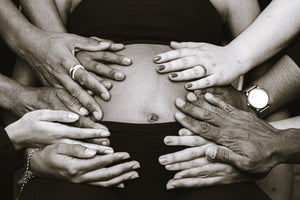Second Trimester | Gestational Diabetes: Symptoms, Risks, and Managemen
If you’re in your second trimester of pregnancy and you’ve been diagnosed with gestational diabetes, or GD, there is no need to panic. Once you receive the diagnosis, it’s fairly easy to control, and your doctor will help you learn what to do. Roughly 6% to 9% of all pregnant women are diagnosed with GD, and it usually goes away after you give birth. If you’d like to learn more about it, you’ve come to the right place.
What Is Gestational Diabetes?
Even if you’re not diabetic before you get pregnant, it can happen to you afterwards. GD normally happens in the 24th to 28th week of pregnancy and is caused by the hormones in the placenta blocking the effect of the insulin produced in the pancreas. As a result, there are high levels of sugar in the blood, known as hyperglycemia, which needs to be managed so that your organs, blood vessels, and nerves do not become damaged.
Some women are more at risk for GD than others are. These include women who:
- Are overweight
- Are on bed rest
- Have received a diagnosis of being pre-diabetic
- Are older
- Have diabetes in their family
- Have certain medical conditions
- Are carrying more than one baby
Also, if you’ve had GD in a previous pregnancy, the chances of being diagnosed again with the disorder are higher. GD is not difficult to control, but because it isn’t that uncommon, most doctors regularly screen their pregnant patients for it. One of the reasons for this is that most women have none of the symptoms of the disease.
Some women, however, do have the following symptoms:
- Urinating frequently and in large amounts
- Extreme thirst that can’t be quenched
- Fatigue
How GD Is Diagnosed
Testing for diabetes during pregnancy is usually done with something called a glucose screening test, sometimes called a glucose tolerance test. There are both one-hour and three-hour tests that involve drinking a sugary orange-flavored drink and then testing your blood sugar an hour or three hours later. They always start with the one-hour test and use the three-hour test as a more detailed test that lets them know for sure if you have the disease.
If your diabetes isn’t controlled during the pregnancy, it can cause women to have large babies and therefore need a C-section, stillbirth, or preeclampsia. It can also cause problems for the baby, including some breathing difficulties and even jaundice. In addition, if GD is diagnosed, there is an increased chance that the baby will be diagnosed with Type 2 diabetes later in life. To be sure, controlling and managing gestational diabetes is of utmost importance.
Taking Care of Yourself When You Have GD
Fortunately, being diagnosed with diabetes when you’re pregnant doesn’t have to change your life completely, although it does require a minor lifestyle change. After being diagnosed with GD, you’ll be required to watch what you eat, test your blood sugar several times a day, and maybe even consult with a dietician. Exercise also helps, but you don’t have to run marathons to manage diabetes. Light to medium exercise on a regular basis is a big help.
When you’re pregnant, you’ll be expected to take good care of yourself, which includes exercising, eating the right foods, and abstaining from alcohol and tobacco. These same actions can help you control your GD, although you may have to be a little stricter about your diet. Your doctor and a good nutritionist can help, and your OB-GYN may also send you to see an endocrinologist, which is a doctor who specializes in hormones.
Oftentimes, if you have GD the hospital will test your baby’s blood immediately after the birth to test for low blood sugar. Low blood sugar is not that uncommon in newborns whose mothers had diabetes while they were pregnant. Fortunately, testing and monitoring your GD and the baby’s health is easier than most people realize and most of the tests are painless.
There are other things that might happen if you have GD. For instance, if the doctor knows you have the disease they’ll monitor the baby’s growth a little closer at each of your visits. They’ll encourage you to exercise more and eat not only healthy, but eat the right foods at the right times. Just like when you’re pregnant, GD is easier to control when you eat four to six small meals during the day instead of three large meals.
Conclusion
Gestational diabetes (GD) affects 6% to 9% of all pregnant women but goes away after you give birth. Once diagnosed, you’ll be expected to watch what you eat, exercise, and test your blood sugar throughout the day. You may also be required to see a nutritionist or endocrinologist, especially if you’re having trouble managing the disease. Your baby will also be monitored more closely than normal and probably be tested for low blood sugar immediately after you give birth.
Continue Reading
-
April 04, 2024
content
Second-Trimester Ultrasound: What You Need to Know
-
April 02, 2024
content
Dealing with Pregnancy Hormones: Emotional Wellness During the Second Trimester
-
April 01, 2024
content
Second Trimester | Pregnancy Glow: Skincare Tips for Expecting Moms












